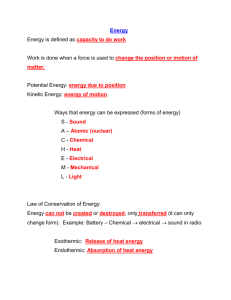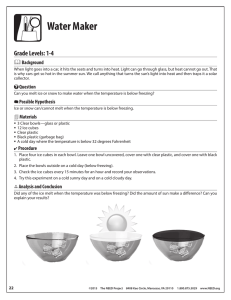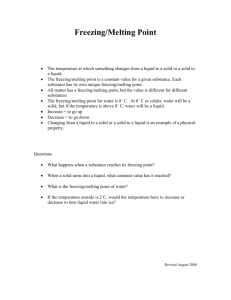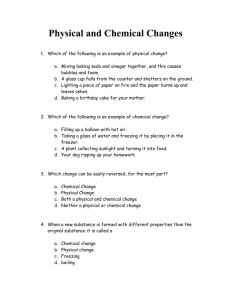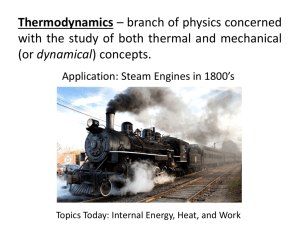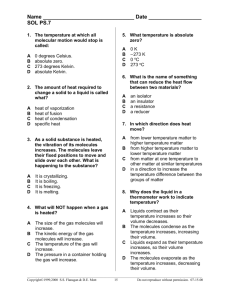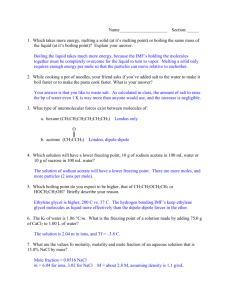Evaporation and boiling
advertisement
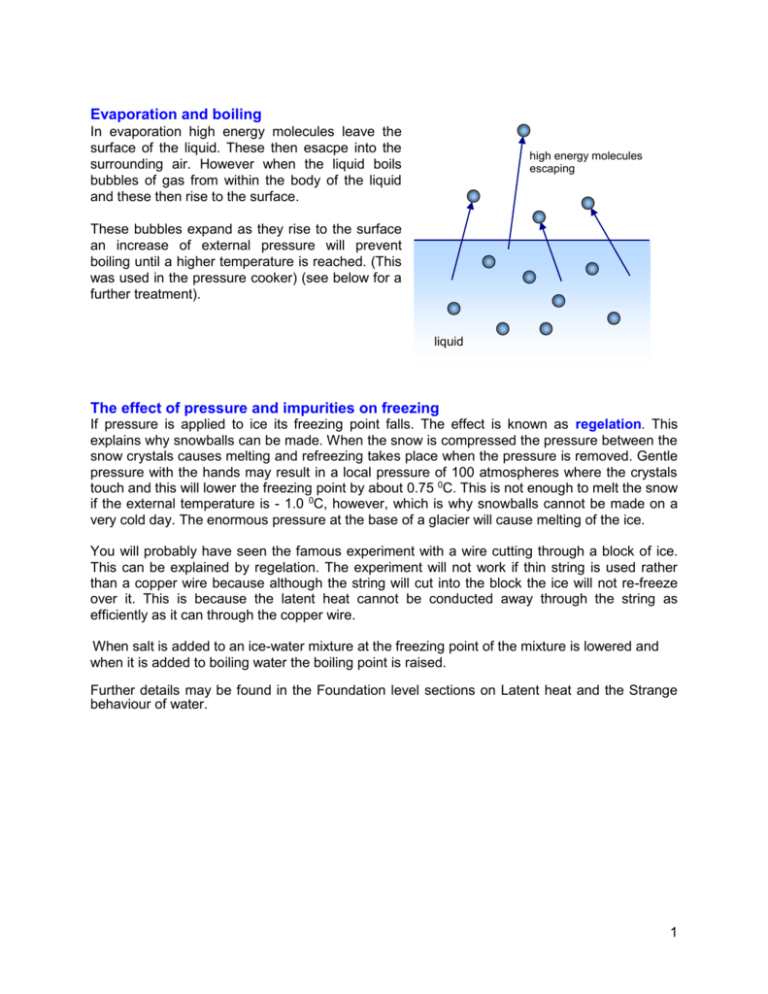
Evaporation and boiling In evaporation high energy molecules leave the surface of the liquid. These then esacpe into the surrounding air. However when the liquid boils bubbles of gas from within the body of the liquid and these then rise to the surface. high energy molecules escaping These bubbles expand as they rise to the surface an increase of external pressure will prevent boiling until a higher temperature is reached. (This was used in the pressure cooker) (see below for a further treatment). liquid The effect of pressure and impurities on freezing If pressure is applied to ice its freezing point falls. The effect is known as regelation. This explains why snowballs can be made. When the snow is compressed the pressure between the snow crystals causes melting and refreezing takes place when the pressure is removed. Gentle pressure with the hands may result in a local pressure of 100 atmospheres where the crystals touch and this will lower the freezing point by about 0.75 0C. This is not enough to melt the snow if the external temperature is - 1.0 0C, however, which is why snowballs cannot be made on a very cold day. The enormous pressure at the base of a glacier will cause melting of the ice. You will probably have seen the famous experiment with a wire cutting through a block of ice. This can be explained by regelation. The experiment will not work if thin string is used rather than a copper wire because although the string will cut into the block the ice will not re-freeze over it. This is because the latent heat cannot be conducted away through the string as efficiently as it can through the copper wire. When salt is added to an ice-water mixture at the freezing point of the mixture is lowered and when it is added to boiling water the boiling point is raised. Further details may be found in the Foundation level sections on Latent heat and the Strange behaviour of water. 1
